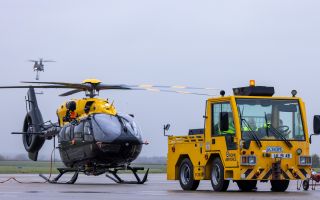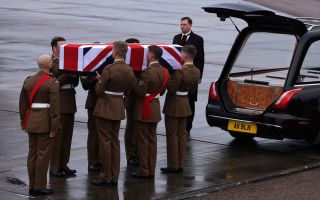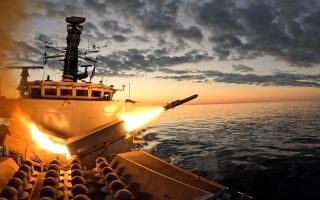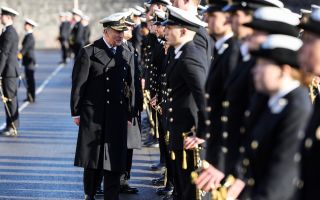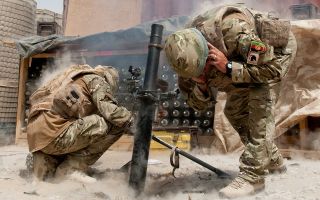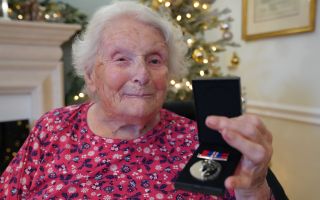When Silent Service goes silent: How Nato prepares for disaster beneath the waves
At any given time, hundreds of submarines are operating around the world – including many belonging to Nato allies.
They gather intelligence, support special operations and maintain a nuclear deterrent, all while remaining hidden below the waves.
But what happens if something goes wrong?
Submarine rescue ships are on standby wherever there are submarines at sea.
They carry specialist equipment and personnel ready to respond to one of the most complex and dangerous emergencies navies can face.
To stay prepared, Nato runs a major multinational exercise every three years.
Known as Dynamic Monarch, it brings together naval forces from across the alliance to practise submarine search and rescue procedures.
The most recent exercise took place off the coast of Norway and involved Canada, France, Germany, the Netherlands, Norway, Poland, Sweden, Turkey, the UK and the US.
Jake Tupman, a Nato video producer embedded with the crews, described the effort as a vital collaboration.
"Any search and rescue operation at sea is fraught with risks and difficulties and requires a lot of cooperation and coordination. But what happens when a crisis strikes under the water?" he said.

'We share everything with everyone'
The exercise simulated a scenario involving a distressed submarine – known as a DISSUB – and tested every stage of a potential rescue, from locating the submarine to providing medical and psychological support for survivors.
Lieutenant Commander Joakim Classon, a Submarine Escape and Rescue Officer with the Swedish Navy, said: "Normally, a submarine is something you want to keep very classified, you don't share what you have.
"But regarding rescue, you share everything with everyone that's a part of this cooperation."
Nato's coordination of submarine rescue was significantly strengthened after the Kursk disaster in 2000, when a Russian nuclear submarine sank in the Barents Sea, killing all 118 on board.
The incident led to the creation of ISMERLO – the International Submarine Escape and Rescue Liaison Office – a global coordination centre monitoring submarine movements and mobilising emergency responses.

From sonar contact to rescue vehicle
In a real crisis, the first priority is locating the submarine. On board the Turkish rescue ship TCG Alemdar, Captain Okan Erdem explained how sonar is used to find and assess the stricken vessel.
"We can see the image of the missing submarine. The sonar beams strike the submarine and come back to our transmitter. We can decide, is it stable or is it inclining, declining?" he said.
Once the submarine is found, the UK's Distressed Sub Group, a specialist unit of the Royal Navy, works to establish communication with those trapped below.
Commander Nick Samuels, an expert in Submarine Escape, Rescue, Abandonment and Survival (SMERAS), explained: "Once we've done that, a nation can then tailor the response.
"Our role is to remain on station and provide subject matter expertise to the situation and control it until the larger units turn up."
Into the deep
A URF is a yellow Swedish submarine rescue vehicle capable of diving to 460 metres and rescuing up to 35 people at a time.
It was operated by a Swedish crew and was a key part of the exercise.
"It's really good because there's a good insurance to go out at sea," said 'Lennart', Commanding Officer of the Swedish submarine HSwMS Uppland.
"We never go out without submarine rescue available. We are really depending on these rescue operations.
"But they are working like a fire station – ready to get out. You hope you don't need them, but they are ready."
Once the URF had connected, or "mated", with the submarine, the exercise moved to the final phase, medical support and decompression.

Mental health and recovery
Submariners rescued from depth are at risk of decompression sickness, or "the bends", and must be transferred under pressure into specialised decompression chambers.
Stuart Paton, Transfer Under Pressure Supervisor, said: "If they've been at pressure for long, we can get them up at the same pressure, bring them in and then the doctors can put them onto a dive table to get them back to atmosphere at a safe condition."
But it's not just physical health that matters. Lieutenant Commander Lyndse Anderson from the US Navy said psychological recovery is just as important.
"I actually would probably rephrase it from mental health issues to normal reactions to an abnormal situation," she said.
"What we're there to do is instil the continued sense of human resilience and confidence and capability that every person who is faced with a tragedy or a disaster is likely to have inside of themselves."
Ready if needed
Nato's submarine rescue capability is rarely used, but it remains on standby wherever its submarines operate.
As Jake Tupman put it: "Submarine rescue is a daunting and difficult task that is thankfully rarely required, but if something does happen under the seas, allies have the resources, equipment and dedicated personnel to work together to respond to any crisis in the deep."

